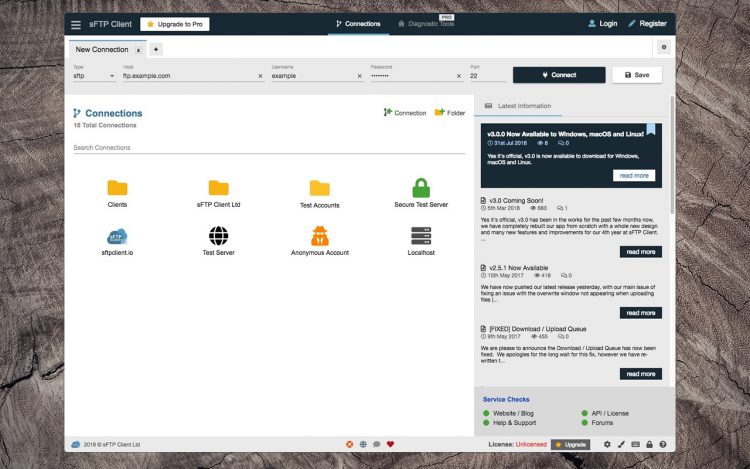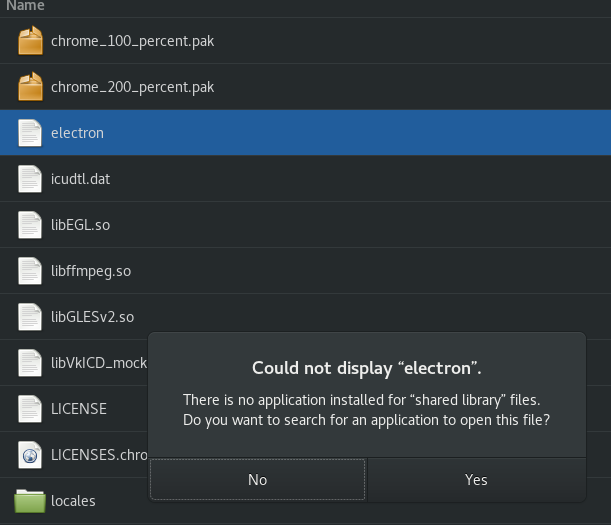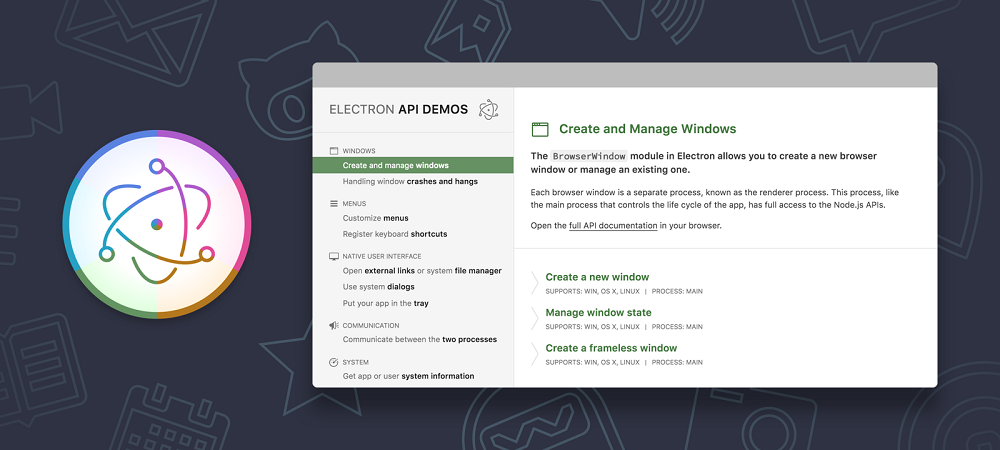

- Electron api client file system how to#
- Electron api client file system mac#
- Electron api client file system windows#

You may choose to follow today's common practice and bundle all of your front-end assets in a single Javascript file.You may need to leverage one or many of the Node APIs in your app.You may need your Electron app to access a database or other external service/system.The internals of an Electron appįrom here, the architecture of your own Electron app may differ in possibly one of these ways: The main entry point of the npm project is the entry point of an Electron app where we optionally include any Node APIs we desire, as well as create the browser that renders a UI. We will then discuss various dependencies an Electron application may have, along with the version of Electron, and how that changes how Chromium and Node interact with each other in the Electron framework.Īn Electron app is a npm project that includes the electron framework as a dependency. How do Chromium and Node interact with each other?īefore we are able to explain how Chromium and Node interact within the Electron framework, we will first review the project structure of an Electron application. This feature is one benefit Electron has over Tauri (another cross-platform framework) - your app will look and behave exactly the same on any supported operating system. Since Electron uses Chromium, we have cross-platform support: every operating system will use the same bundled version of Chromium. Chromium is what renders the screens/windows of your Electron app, while Node provides OS-level functionality (think file access, database access, etc.) for your application. The Electron framework bundles Chromium, the open source, cross-platform browser and Node into one framework. How does Electron support multiple platforms? This environment we live in has created incentives to prioritize portability over performance if we want our app to succeed in this highly competitive space this is where Electron comes in.Įlectron leverages common languages, Javscript, HTML and CSS, in order for you to quickly scaffold and refine your app for cross-platform use. Nine times out of ten it is better to be first to market than to come in second. In today's world, memory is cheap and time is expensive. Support a client who does not need cross-platform support.Provide users with a very fast and responsive app.Provide a low memory footprint for your app.You might choose to write an app in a platform-specific language if you want to: To write a desktop app on Linux might leverage Gtk or GNOME.
Electron api client file system mac#
To write a desktop app on Mac requires knowledge of the Cocoa framework.
Electron api client file system windows#
To write a desktop app on Windows would likely use WPF. Native desktop apps require specialized knowledge per platform in order to develop them. We will build our knowledge incrementally, so by the end of the post, you will have a clear understanding of the Electron framework and be able to use this new knowledge with your creativity to build the app you have been dreaming of. You have just taken the next step to invest in yourself and your skills by reading this guide! In this post, we will be taking a deep dive into the Electron JS ("Electron") framework, learning how everything works and how it was designed to fit together.

Electron api client file system how to#
This post has been updated in July 2022 to include a companion blog post (at the bottom of this post) walking users how to create an Electron application from scratch which nicely complements the information contained within this blog post.


 0 kommentar(er)
0 kommentar(er)
